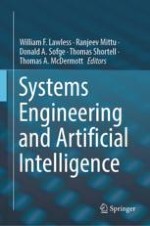2021 | OriginalPaper | Chapter
25. Outside the Lines: Visualizing Influence Across Heterogeneous Contexts in PTSD
Authors : Beth Cardier, Alex C. Nieslen, John Shull, Larry D. Sanford
Published in: Systems Engineering and Artificial Intelligence
Publisher: Springer International Publishing
Activate our intelligent search to find suitable subject content or patents.
Select sections of text to find matching patents with Artificial Intelligence. powered by
Select sections of text to find additional relevant content using AI-assisted search. powered by
